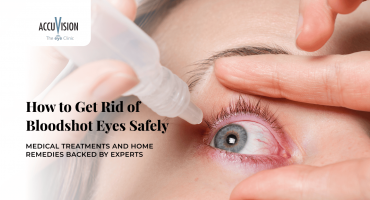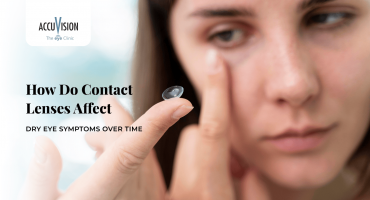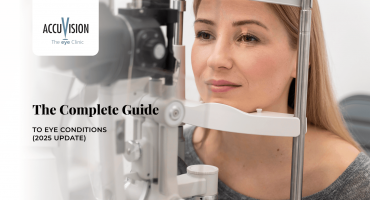- How PRK and LASIK Work
- So, what exactly is LASIK?
- Recovery and Aftercare
- Cost Comparison in the UK
- Long-Term Outcomes and Satisfaction
- Which Is Right for You?
- Conclusion
- Frequently Asked Questions (FAQs)
- References

Laser vision correction offers long-term visual improvement, but choosing between PRK (surface laser) and LASIK (flap-based laser) means weighing differences in procedure, recovery, and cost. PRK (photorefractive keratectomy) and LASIK both reshape the cornea with an excimer laser, but PRK removes the outer epithelium (surface layer), while LASIK involves a thin corneal flap. This key difference affects healing time and comfort.
In this guide we compare the two methods and, especially, their costs in the UK. We’ll explore pricing, recovery timelines, and what to expect, helping you make an informed choice based on your needs.
How PRK and LASIK Work
Both PRK and LASIK ultimately correct vision by reshaping the cornea, but they do it differently. In LASIK, a microscopically thin flap is created on the cornea, lifted so the laser can treat deeper layers, and then smoothed back into place. Recovery is rapid because the flap heals naturally. In PRK, there is no flap; instead, the laser directly removes the top epithelial layer of the cornea, reshaping the surface. The epithelium then regenerates over several days. Removing the epithelium preserves more tissue beneath the surface, which can be more conservative for very thin or irregular corneas. AccuVision uses Trans-Epi PRK, which is performed with a no-touch, all-laser technique that avoids alcohol and manual scraping, offering a gentler approach to surface laser treatment.
In short, LASIK trades a tiny corneal flap for quicker visual recovery, whereas PRK avoids any flap altogether (no flap means no risk of flap complications).
So, what exactly is LASIK?
After surgery, LASIK patients typically see almost immediately. Most LASIK patients have sharp, functional vision by the next morning. Discomfort is usually a mild, gritty sensation for a day, and most people can return to desk work within 1–3 days. By contrast, PRK’s initial healing can be slower. A clear bandage contact lens is used in both LASIK and PRK to help with increased comfort and quicker recovery. Vision is a little hazy at first (although already better focused than without glasses): patients commonly experience watering, light sensitivity, and blurred vision for the first 48 hours. By days 4–7, the bandage contact lens is usually removed, and vision becomes better. Clarity then improves further over the first weeks, with each day a little better.
Recovery and Aftercare
After surgery, LASIK patients typically see almost immediately. Most LASIK patients have sharp, functional vision by the next morning. Discomfort is usually a mild, gritty sensation for a day, and most people can return to desk work within 1–3 days. By contrast, PRK’s initial healing can be slower. A clear bandage contact lens is used in both LASIK and PRK to help with increased comfort and quicker recovery. Vision is a little hazy at first (although already better focused than without glasses): patients commonly experience watering, light sensitivity, and blurred vision for the first 48 hours. By days 4–7, the bandage contact lens is usually removed, and vision becomes better. Clarity then improves further over the first weeks, with each day a little better.
- Typical LASIK recovery: Vision is often clear by Day 1 with only minor dryness or scratchiness. Many return to work within 2–3 days.
- Typical PRK recovery: nitial days 1–3 under a bandage contact lens with tearing and glare. By day 5–7 vision is functional (still slightly blurred), and full clarity usually returns over 2–4 weeks.
If patients take rest and are compliant with their post operative care, most patients who undergo PRK are at the same stage of visual recovery as LASIK patients by day 4-5. In both procedures, small fluctuations in vision can continue in the first weeks as vision gradually improves even more day by day.
Cost Comparison in the UK
When choosing between PRK and LASIK, cost is often a key consideration. In the UK, laser eye surgery typically ranges from around £1,200 to £1,800 per eye, depending on the clinic and individual case.
What affects cost: Severity of your prescription, the clinic’s technology (custom wavefront or topography guidance adds cost), and any package inclusions.
Special promotions can also occur (for example, UK deals have appeared for ~£999 per eye on mild myopia packages), but these usually apply only to specific prescriptions and have terms.
In short, both LASIK and PRK fall into the same broad UK price band. Some clinics offering types of PRK that use older techniques may offer these at a lower cost.
At AccuVision, the cost of treatment is generally based on the complexity of the prescription, corneal profile, and customisation needed. Both LASIK and PRK cost between 1200 and 1800 on average, inclusive of all post operative care.
Long-Term Outcomes and Satisfaction
Almutairi et al. (2025) conducted a comprehensive meta-analysis and found no significant advantage in final vision outcomes between LASIK and PRK. Their findings confirm that both procedures are equally effective in helping patients achieve their visual goals. Solomon et al. (2009) conducted a global literature review showing that, on average, 95.4% of LASIK patients were satisfied with their outcomes. Wavefront-guided PRK achieved excellent outcomes, with 99.4% of eyes attaining 20/20 visual acuity by 6 months post-treatment (Hofmeister et al., 2023). These findings highlight long term satisfaction that many individuals experience following treatment.
Which Is Right for You?
All procedures have pros and cons, and often it’s not about personal preference but rather what is clinically best in each case. Deciding between PRK and LASIK depends largely on individual eye anatomy and lifestyle, rather than cost. For suitable candidates, both are excellent.
- LASIK is often recommended if: Your corneas are of normal thickness or thicker and you want minimal downtime. LASIK is ideal for patients needing a rapid return to normal activities or work. If you have a very stable prescription and are happy not to have a long healing period, LASIK’s fast recovery can be appealing. LASIK also suits those with little pre-existing dry eye, since a tiny flap is created (modern techniques keep dryness minimal).
- PRK is recommended if: You have thinner or slightly irregular corneas, or a profession/hobby with impact risk. PRK (especially Trans-Epi PRK) preserves more corneal tissue because no flap is there. This makes PRK the safer choice for marginal corneas or for people like contact sports athletes, military personnel or martial artists (where a flap could theoretically dislodge). PRK is also often recommended if you have chronic dry eye or sensitive corneal surface issues, since it avoids creating a flap that might exacerbate dryness.
A thorough consultation with detailed corneal mapping will determine candidacy. Your surgeon will recommend the safest, most predictable option for your eyes.
Conclusion
In summary, both PRK and LASIK can give you clear, glasses-free vision with success rates well above 95%. LASIK tends to deliver faster visual recovery (often by the next day) and is the more common choice for thick corneas. AccuVision’s Trans-Epi PRK offers a flap-free solution that preserves more tissue, making it ideal for patients with thin corneas or active lifestyles.
From a cost perspective, they occupy a similar bracket in the UK market. Expect to pay roughly £1,200–£1800 per eye for either surgery, with PRK usually near the lower end and high-tech LASIK near the upper end of the range. Always ensure any quote you get is comprehensive (covering tests, surgery, and aftercare)
Ultimately, the choice isn’t about a huge cost difference; it’s about which procedure best matches your eyes and needs. Both options offer life-changing vision improvement. By understanding the differences in cost, healing time, and suitability, you can make a well-informed decision.
Frequently Asked Questions (FAQs)
1. Which surgery is more affordable, PRK or LASIK?
Both LASIK and PRK generally fall within the same broad price range in the UK. However, PRK may be slightly more affordable in some cases, particularly at clinics that use older PRK techniques.
2. Is PRK or LASIK better for faster recovery?
LASIK offers much quicker recovery; most patients regain functional vision within 24 hours and return to normal activities in 2–3 days. PRK can take a little longer to get to the same destination. The initial recovery can take an extra couple of days, and also focus still improves immediately, some soft focus means a slightly longer return to normal than with LASIK;
3. How do I know if I’m a better candidate for PRK or LASIK?
Your corneal thickness, lifestyle, and eye health will determine your best option. LASIK suits those with average or thick corneas and minimal dry eye, while PRK is ideal for thinner corneas, dry eye issues, or people involved in contact sports or high-impact jobs.
4. Are vision results different between PRK and LASIK in the long run?
No. Studies show that both PRK and LASIK have similar long-term success rates, with over 95% of patients achieving their desired vision correction. The main difference lies in the healing process and initial comfort level, not in final vision quality.
References
- Almutairi, M.N., Alshehri, A.M., Alhoumaily, A.Y., Alnahdi, O., Taha, M.A. and Gangadharan, S. (2025). Meta-analysis: clinical outcomes of laser-assisted in situ keratomileusis (LASIK) and photorefractive keratectomy (PRK) in hyperopia. BMC Ophthalmology, [online] 25(1). doi:https://doi.org/10.1186/s12886-025-03956-6.
- Hofmeister, E.M., Cason, J.B., Murdoch, D.M., Yau, I.W., Wang, Y., Parizadeh, D.D., Janakiraman, D.P. and Kasthurirangan, S. (2023). Wavefront-guided PRK treatment of myopia using a refractive aberrometer. Journal of cataract and refractive surgery, [online] 49(3), pp.292–298. doi:https://doi.org/10.1097/j.jcrs.0000000000001083.
- Solomon, K.D., Fernández de Castro, L.E., Sandoval, H.P., Biber, J.M., Groat, B., Neff, K.D., Ying, M.S., French, J.W., Donnenfeld, E.D. and Lindstrom, R.L. (2009). LASIK World Literature Review. Ophthalmology, [online] 116(4), pp.691–701. doi:https://doi.org/10.1016/j.ophtha.2008.12.037.








